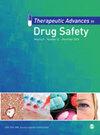Impact of different doses of esketamine on the incidence of hypotension in propofol-based sedation for colonoscopy: a randomized controlled trial
IF 3.4
3区 医学
Q2 PHARMACOLOGY & PHARMACY
引用次数: 0
Abstract
Background:Hypovolemia is common in colonoscopy due to fasting and bowel preparation, and propofol itself can reduce systemic vascular resistance, resulting in relative hypovolemia. Therefore, hypotension is not a rare event during propofol-based sedation for colonoscopy.Objectives:Our objective was to explore the efficacy of esketamine as a sedative adjuvant in reducing the incidence of hypotension during colonoscopy.Design:This was a prospective randomized trial. The trial was registered with the Chinese Clinical Trial Registry (ID: ChiCTR 2100047032).Methods:We included 100 eligible patients who planned to receive a colonoscopy and randomly divided them into 4 groups with 25 patients in each group, which were propofol 2 mg/kg (Group P), propofol 1 mg/kg with esketamine 0.2 mg/kg (Group E1), propofol 1 mg/kg with esketamine 0.3 mg/kg (Group E2), and propofol 1 mg/kg with esketamine 0.4 mg/kg (Group E3). The hemodynamic and respiratory parameters were documented at various times during the procedure, including the patient’s entry into the endoscopic room (T0), the induction of sedation (T1), the insertion of the colonoscope (T2), the removal of the colonoscope (T3), and the awakening of the patient (T4). The primary outcome was the incidence of hypotension. Secondary outcomes were cardiovascular side effects other than hypotension, incidence of hypoxia, cumulative changes in cardiovascular and respiratory parameters, total propofol dosage, anesthesia recovery time, and satisfactory levels of both patients and endoscopists.Results:The incidence of hypotension in Group E1 (16%), Group E2 (16%), and Group E3 (12%) was significantly lower than in Group P (60%), with p values 0.003, 0.003, and <0.001 respectively. The cumulative changes in diastolic blood pressure and mean arterial pressure in Groups E1, E2, and E3 were significantly higher than in Group P ( p = 0.024, p < 0.001, p = 0.006, respectively). Cumulative changes in systolic blood pressure in Group E3 were significantly higher than those in Group P ( p = 0.012). The respiratory-related parameters were not statistically significant.Conclusions:This study showed that the application of 0.4 mg/kg esketamine in propofol-based sedation reduced the incidence of hypotension during colonoscopy while providing satisfactory sedation.不同剂量的艾司卡胺对异丙酚镇静结肠镜检查中低血压发生率的影响:随机对照试验
背景:由于禁食和肠道准备,低血容量在结肠镜检查中很常见,而丙泊酚本身可降低全身血管阻力,导致相对低血容量。目的:我们的目的是探讨艾司氯胺酮作为一种镇静辅助药物在降低结肠镜检查过程中低血压发生率方面的疗效。方法:将100名符合条件的结肠镜检查患者随机分为4组,每组25人,分别为异丙酚2 mg/kg(P组)、异丙酚1 mg/kg加艾司卡胺0.2 mg/kg(E1组)、异丙酚1 mg/kg加艾司卡胺0.3 mg/kg(E2组)、异丙酚1 mg/kg加艾司卡胺0.4 mg/kg(E3组)。在手术过程中的不同时间记录血液动力学和呼吸参数,包括患者进入内镜室(T0)、诱导镇静(T1)、插入结肠镜(T2)、移除结肠镜(T3)和唤醒患者(T4)。主要结果是低血压的发生率。次要结果是低血压以外的心血管副作用、缺氧发生率、心血管和呼吸参数的累积变化、异丙酚总用量、麻醉恢复时间以及患者和内镜医师的满意度。结果:E1组(16%)、E2组(16%)和E3组(12%)的低血压发生率明显低于P组(60%),P值分别为0.003、0.003和<0.001。E1、E2 和 E3 组舒张压和平均动脉压的累积变化明显高于 P 组(分别为 p = 0.024、p <0.001、p = 0.006)。E3 组收缩压的累积变化明显高于 P 组(p = 0.012)。结论:本研究表明,在使用异丙酚镇静的过程中使用 0.4 mg/kg 艾司卡胺可降低结肠镜检查过程中低血压的发生率,同时提供令人满意的镇静效果。
本文章由计算机程序翻译,如有差异,请以英文原文为准。
求助全文
约1分钟内获得全文
求助全文
来源期刊

Therapeutic Advances in Drug Safety
Medicine-Pharmacology (medical)
CiteScore
6.70
自引率
4.50%
发文量
31
审稿时长
9 weeks
期刊介绍:
Therapeutic Advances in Drug Safety delivers the highest quality peer-reviewed articles, reviews, and scholarly comment on pioneering efforts and innovative studies pertaining to the safe use of drugs in patients.
The journal has a strong clinical and pharmacological focus and is aimed at clinicians and researchers in drug safety, providing a forum in print and online for publishing the highest quality articles in this area. The editors welcome articles of current interest on research across all areas of drug safety, including therapeutic drug monitoring, pharmacoepidemiology, adverse drug reactions, drug interactions, pharmacokinetics, pharmacovigilance, medication/prescribing errors, risk management, ethics and regulation.
 求助内容:
求助内容: 应助结果提醒方式:
应助结果提醒方式:


